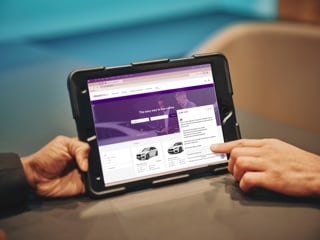The UK automotive industry is deceptively profitable. When I say “deceptively”, I don’t mean that it secretly isn’t. The sector still contributes over 10% of the country’s exports, and is worth tens of billions of pounds in annual revenue; it even took the recent financial crisis on the chin.
How is it deceptive? Essentially, because the market is so huge and so healthy, it can look like it has far more opportunity than it actually does. For companies that entered the aftermarket space relatively recently, the shock of reality can take a while to wear off – and the reality is, if you’re entering this sector in 2015, you’ll find it’s as difficult a field to establish yourself in as any other, and you certainly won’t be starting from pole position. Major players dominate the sector, and with higher budgets and brand recognition on their side, they have a huge advantage over everyone else.
None of this means there isn’t any opportunity, of course; it just means that automotive executives need to look for it in unconventional places. And one of the advantages a smaller creature has is that an apex predator, in the absence of a serious rival, is liable to grow complacent. A hungrier competitor willing to do things a little differently is entirely capable of taking its share of the spoils.
An excellent place to start making profitable inroads is with your company’s sales team. Using the power of big data analytics, it’s possible to carve out a decent slice of the automotive aftermarket for your company. How?
Technophobia is relatively widespread across the automotive industry. To an extent, this is understandable, and the underlying reasoning behind it – if not the apprehension itself – is sound: to be good at sales, you need confidence and charm. Salespeople have to believe that they are the alpha and omega of a deal’s success, or they can’t do their jobs.
This is why they tend to favour orthodox tactics when it comes to sales; the automotive industry, which dates back to when Henry Ford introduced the commercial automobile, is particularly prone to this. A recent survey of 421 US aftermarket salespeople conducted by sales-i found that ‘analogue’ forms of selling were still prevalent in the industry: 45% said they preferred in-person meetings; 38% cited cold calling; and a mere 5% said online sales were driving business. 72% used social media as part of a lead generation strategy, but only 25% of them used it for customer-facing purposes – so even where it is used, it’s kind of half-hearted for the most part.
While this isn’t directly applicable to the UK market, there’s still a perceptible reluctance to get on board with new software. Here’s the thing: despite what you may have read about robots taking over everyone’s jobs, technology is there to help salespeople, not replace them – all they have to do is let it.
Big data analytics makes it possible to identify opportunities that might never have occurred to your salespeople otherwise.
One of the most obvious ways it does this is by assisting your marketing team with lead generation. In the eternal, internal tug-of-war between marketing and sales – both blaming the other for failure and naturally taking credit for all the success – business intelligence software at least robs the former of any real excuse. Automated trend reports remove all of the administrative burden and much of the intellectual burden, meaning that marketing professionals are able to hone in on the best prospects before presenting them to the sales team. For example, if the software notices a regional surge in the sales of spare tyres, it can issue an instant alert recommending that the company focus energies on this specific area.
Additionally, it’s possible to take those parts that aren’t world-beaters, sales-wise, and turn them into competent performers. If you’re not shifting very many hubcaps, you’ve likely just accepted that they won’t ever generate decent profits – but there may be a combination that does the trick. Should they sell well under specific circumstances, however, it’ll let you know which item to pair it with: if they often move at the same time as wheel covers, for example, you can create a discounted package deal that specifically appeals to these customers.
Your average salesperson isn’t Don Draper: they don’t create profits from a vacuum, and they don’t win new business over with a big speech, a big grin and the faintest hint of crushing inner turmoil (you know, many people who use Don Draper analogies have clearly never seen Mad Men).
To use their time effectively, automotive salespeople need to focus on the things that matter. That means not wasting energy cold calling leads that will never pan out. It means not conducting extensive rehearsals and revision for client meetings when sales intelligence technology lets you get all their relevant information in a moment. It means, ultimately, that they spend the most possible time talking to the customers most likely to convert. For automotive executives, this means the maximum possible profits. In other words, technology can be a sure-fire winner for your business – you just need to trust it.
Author: Paul Black, chief executive of sales-i


















Login to comment
Comments
No comments have been made yet.